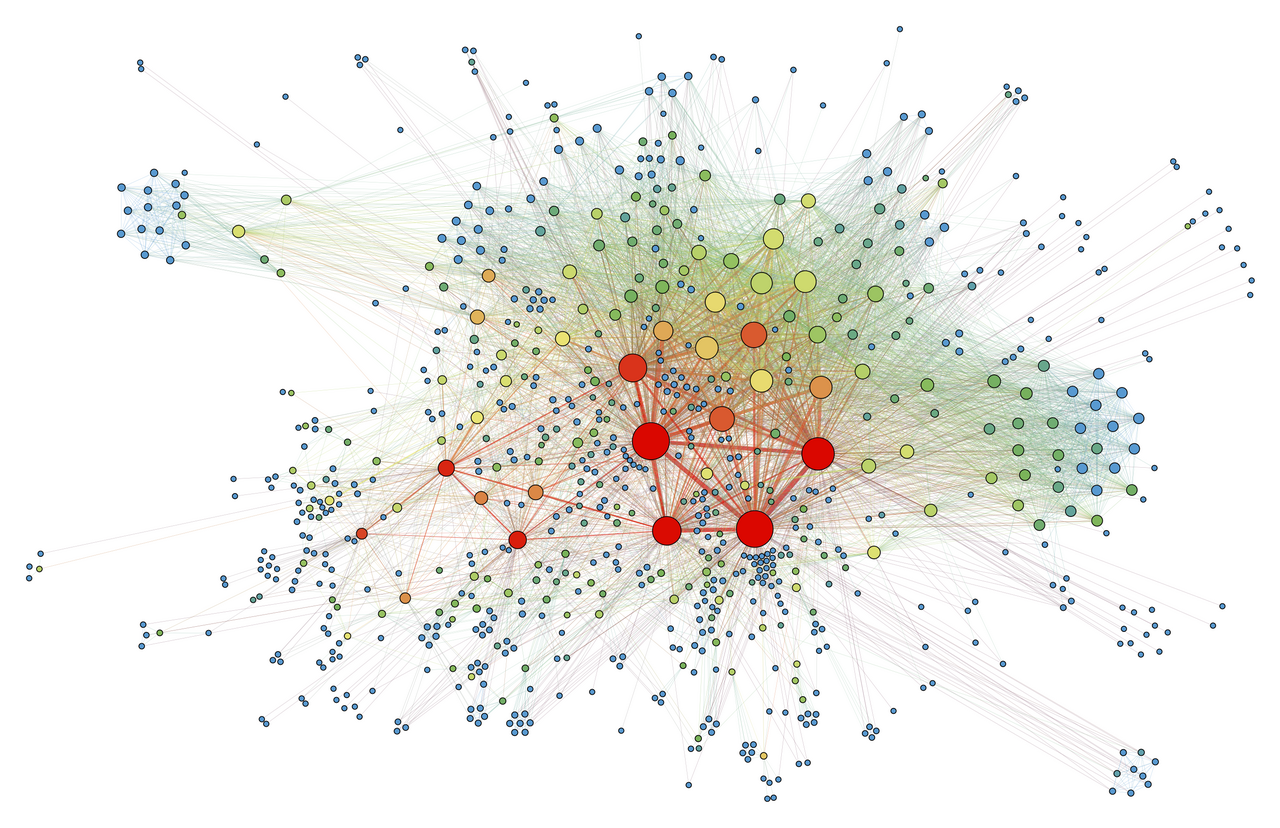
A force-layout network visualization, by Martin Grandjean. Source: Wikimedia
Participating in the networking assignment provided a fascinating and enlightening opportunity to explore connections and patterns within the Golden Record Curation Quiz data. Working with the visualization tools allowed me to observe how communities formed based on song choices, revealing how individual decisions contributed to larger networks. The process was thought-provoking and highlighted both the insights and limitations of data interpretation.
One of the most striking aspects of this assignment was recognizing how subjective preferences and diverse perspectives shape what we consider representative of humanity. The visualization exercise underscored how shared interests can bring people together while leaving room for individuality. It also revealed the complexity of human connections—seemingly small choices can foster a sense of community or unveil unexpected patterns. However, the absence of personal and cultural context behind the selections left many questions unanswered. This gap invites curiosity about the unseen forces driving each participant’s decisions, emphasizing the critical role of context in making data meaningful.
Without understanding the “why” behind selections, it becomes easy to make assumptions based on visible connections alone. For example, a song that appears unpopular within one networked community might be widely chosen across others. These nuances demonstrate how data can sometimes obscure rather than clarify insights without the contextual layers that explain individual or collective motivations. This realization highlighted how subjective preferences influence interpretations of universality, with each participant’s choices likely reflecting their values, interests, or cultural background—factors that remain invisible in the dataset.
Furthermore, this assignment illuminated the broader implications of data interpretation beyond the classroom. In real-world applications, such as analyzing consumer behaviour or shaping political discourse, data is often incomplete without context. Misinterpreting data can lead to misguided conclusions or even manipulation, underscoring the importance of critically assessing its limitations.
Overall, this networking assignment not only encouraged critical thinking and self-reflection but also reinforced the need for curiosity and skepticism. While the visualizations provided valuable insights into shared interests and connections, they reminded me that data is just the beginning of the story. It is the context that adds depth, richness, and complexity to our understanding of human experiences. This exercise was an engaging way to consider how data illustrates relationships and sparks discussions about the intersections of art, culture, and individuality.
